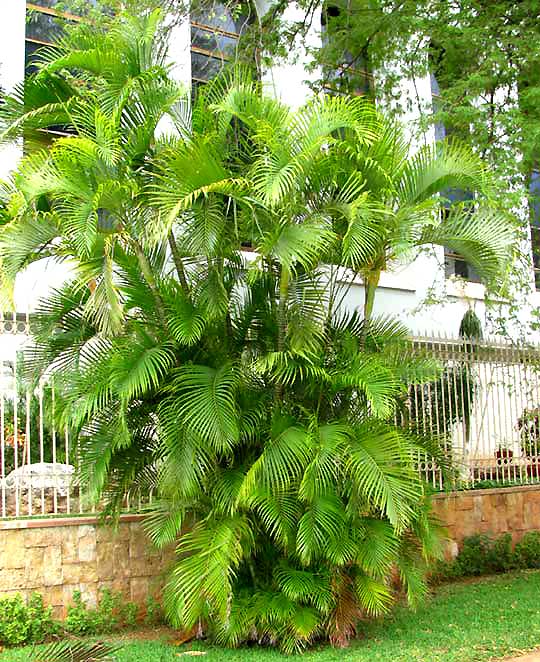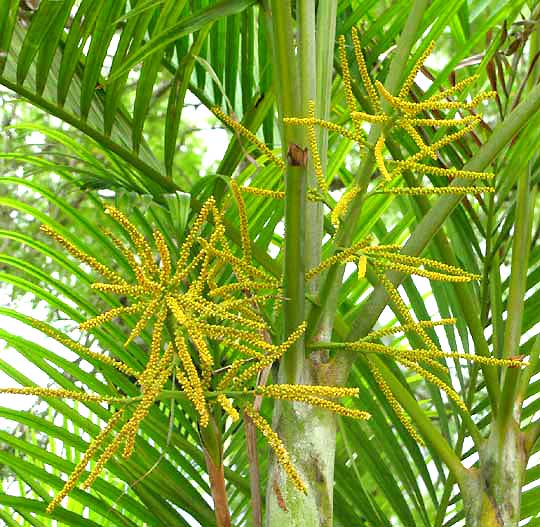Excerpts from Jim Conrad's
Naturalist Newsletter
from the January 23, 2011 Newsletter issued from Hacienda Chichen Resort beside Chichén Itzá Ruins, central Yucatán, MÉXICO; limestone bedrock, elevation ~39m (~128ft), ~N20.676°, ~W88.569°
ARECA PALM
Several months ago when I was visiting the Yucatán's main city, Mérida, for visa purposes, one day along the grand Paseo Montejo I came upon the palm shown below:

It was flowering, as you can see below:

The fronds looked very familiar but I just couldn't put my finger on what it might be. Finally to get help with an ID I uploaded the pictures to the palm-tree-ID part of the free, online palm-fancier's forum at realpalmtrees.com {now offline}.
Weeks passed with no ID, until finally "RuskinPalms" in Houston took a look and wrote: "Its an Areca Palm. This Areca Palm is more mature and this is why not lots of people are able to recognize the mature look of one."
Right. It looked familiar because I'm used to seeing it in big pots up North, and in the tropics often it's planted as a bushy hedge. You seldom see big ones like this standing alone.
So, Areca Palm, also known as Golden Cane Palm, Butterfly Palm and Madagascar Palm, is DYPSIS LUTESCENS. It's abundantly planted throughout the world's tropics and subtropics and originally is from Madagascar. Besides its beauty, one reason for its popularity is that it's easy to grow and is adaptable, accommodating habitats from full sun to shade. It can be grown from seeds, though they need two to six months to germinate. Offshoots cut from the trunk's base can be used to start new plants.